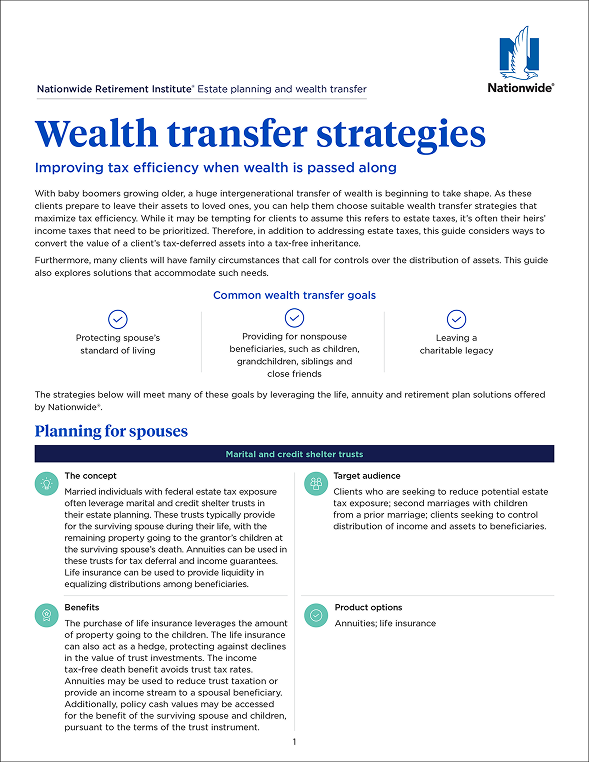ESTATE PLANNING & WEALTH TRANSFER
Wealth transfer strategies
Key takeaways
Summary
We’re here to help
Questions about complex planning strategies? Contact your Nationwide wholesaler or the Nationwide Retirement Institute Advanced Consulting Group at advcg@nationwide.com.
